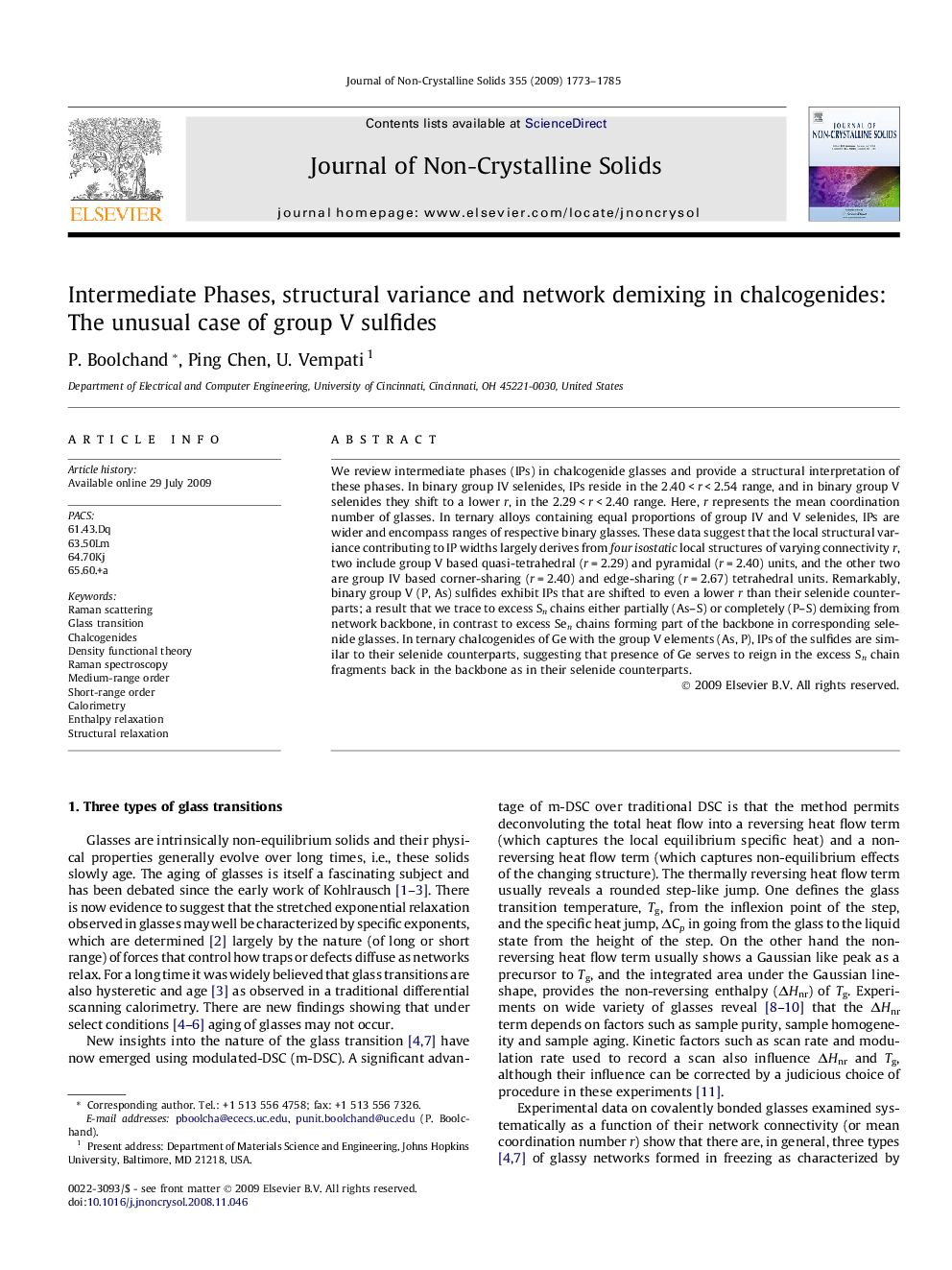| Article ID | Journal | Published Year | Pages | File Type |
|---|---|---|---|---|
| 1483156 | Journal of Non-Crystalline Solids | 2009 | 13 Pages |
We review intermediate phases (IPs) in chalcogenide glasses and provide a structural interpretation of these phases. In binary group IV selenides, IPs reside in the 2.40 < r < 2.54 range, and in binary group V selenides they shift to a lower r, in the 2.29 < r < 2.40 range. Here, r represents the mean coordination number of glasses. In ternary alloys containing equal proportions of group IV and V selenides, IPs are wider and encompass ranges of respective binary glasses. These data suggest that the local structural variance contributing to IP widths largely derives from fourisostatic local structures of varying connectivity r, two include group V based quasi-tetrahedral (r = 2.29) and pyramidal (r = 2.40) units, and the other two are group IV based corner-sharing (r = 2.40) and edge-sharing (r = 2.67) tetrahedral units. Remarkably, binary group V (P, As) sulfides exhibit IPs that are shifted to even a lower r than their selenide counterparts; a result that we trace to excess Sn chains either partially (As–S) or completely (P–S) demixing from network backbone, in contrast to excess Sen chains forming part of the backbone in corresponding selenide glasses. In ternary chalcogenides of Ge with the group V elements (As, P), IPs of the sulfides are similar to their selenide counterparts, suggesting that presence of Ge serves to reign in the excess Sn chain fragments back in the backbone as in their selenide counterparts.
